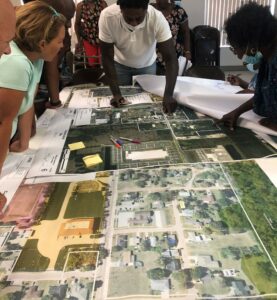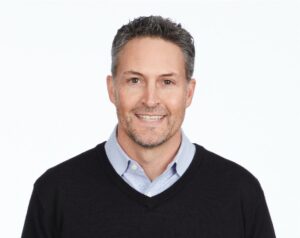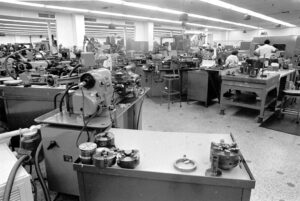The all-day event this Saturday is free and open to the public.
By Ramon Lopez
Original Air Date: Apr. 17, 2024
Host: People in Tallevast were dying of cancer. It’s been 20 years since news broke that a military contractor had contaminated the groundwater in that African American neighborhood in South Manatee County. A conference this Saturday will assess what’s been achieved and what’s not been achieved since then, and what needs to be done. Ramon Lopez reports.
Ramon Lopez: How do communities like Tallevast cope with environmental contamination?

Tallevast redevelopment planning session.
The disadvantaged African-American town is located in south Manatee County, just east of Sarasota Bradenton International Airport. Many of the 75 or so households there include descendants of the town’s original founding families who settled the area as turpentine workers after the Civil War.
The American Beryllium Company (ABC) built a plant in the heart of the community. From the late 1950s until 1996, when Lockheed Martin acquired ABC, the plant fabricated beryllium machine parts, including components for nuclear warheads. Over time, poor management of hazardous waste and discharges from ABC’s wastewater treatment system contaminated the local groundwater with chlorinated solvents, poisoning local drinking water wells.
The major defense contractor has put in place a remedial action plan for groundwater cleanup.
With all this in mind, The University of South Florida’s Center for Brownfield Research is conducting an all-day conference this Saturday, April 20 on USF’s Sarasota-Manatee campus.
Dr. Christian Wells, Director of the Center for Brownfield Research at USF Tampa, outlines the overall objectives of the conference.
Christian Wells: This conference is about a small with a big problem. And that town is Tallevast, on the edges of the City of Sarasota, and the big problem is groundwater contamination. For the conference, we’re going to cover the past, present and future of Tallevast. The past, concerning the groundwater contamination, and the present: We recently received a grant from the Environmental Protection Agency to do a lot of testing and cleaning up. And the future is, for the past year, we’ve been working with stakeholders in the community to come up with a redevelopment plan for change. And we’re going to present that for the first time.

Dr. Wells
RL: Attendees will include academics, public health experts and government officials, including George Kruse, the Manatee County District 7 commissioner. Dr. Wells says the main speakers will delve into how best to deal with environmental contamination.
CW: We also have a really interesting plenary speaker, Dr. Deanna Wathington, who is the incoming president of the American Public Health Association. She’s going to talk about health impacts and health equity issues. And then for our keynote, we have Carlton Eley. He works as the Senior Director for federal strategies at a nonprofit in DC called Race Forward, but he was also an environmental director for the Environmental Justice Office at the Environmental Protection Agency for many years. He’s quite well known.
RL: Dr. Wells explains why the university’s anthropology department got involved with the Tallevast problem in the first place.
CW: In the Department of Anthropology at the University of South Florida, we have our research center called the Center for Brownfields Research and Redevelopment, and I’m the director of that. A nonprofit organization at Tallevast reached out to me a couple of years ago with some questions about what are brownfields? How do you clean up contaminated soil and water? Are there resources available statewide or federally for doing that? And so I got involved with them through this idea about brownfields redevelopment.

Interior of the American Beryllium plant in 1979.
RL: Locals felt lucky to get low-level jobs at the ABC plant. Al Bryant and Carlene Jenkins.
Al Bryant: I got lucky, I was the one that was hired, that was it. I had my uncles work over there and cousins, and I thought, man everybody’s there, you get over there. Well, that’s where the money was.
Carlene Jenkins: We started working at American Beryllium [inaudible], and I did that over the years. And I really didn’t know too much about contamination. I know they had warnings about it, but I didn’t never know, go all into the details about what was going on.
RL: Tallevast residents and plant workers recall the casual way beryllium was disposed of at ABC. We hear from Al Bryant again.
AB: [inaudible] Our supervisors, they were big, they were the ones that handled that code, and they told us, just clean that part.
RL: For two decades, Tallevast residents have had to contend with the environmental disaster, facing an uncertain future. Today, residents find themselves at a crossroads.
The conference will share the extensive research, dire health outcomes, the cleanup process, and the strategic plan for redevelopment.
The conference is free and open to the public, but registration is required. To register, and for more information click here: https://usf.az1.qualtrics.com/jfe/form/SV_77LYjVssreeRHv0?Q_CHL=qr
You can also contact Dr. Christian Wells at: ecwells@usf.edu, or call 813-974-2337.
This is Ramon Lopez for WSLR News.
WSLR News aims to keep the local community informed with our 1/2 hour local news show, quarterly newspaper and social media feeds. The local news broadcast airs on Wednesdays and Fridays at 6pm.